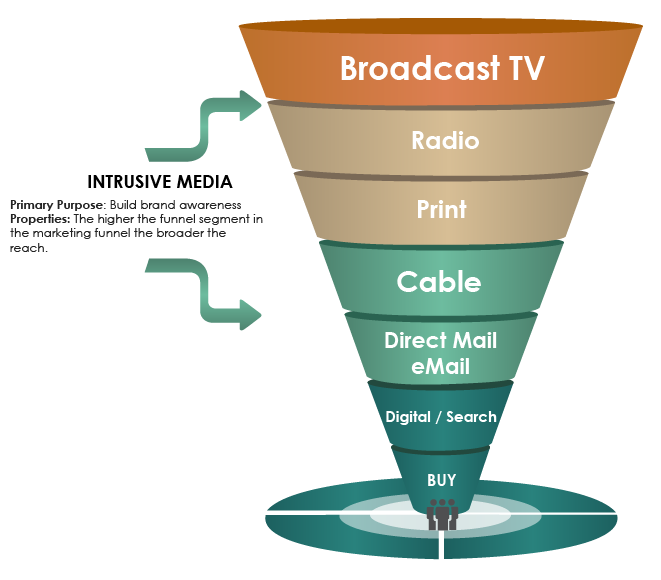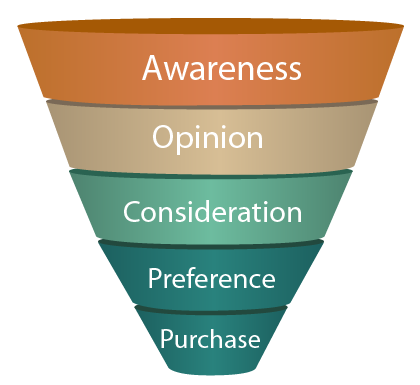The phrase “sales pitch” was first coined in modern commercial #advertising around 1943, but common sense tells us that for as long as people have been selling products, they’ve been thinking about where to find customers and how to find them. The sales funnel we utilize today is nothing more than a visual representation about the path consumers take prior to making a purchase.
Every organization should have a funnel of some sort, and the most popular one that I can recall is likely the AIDA (Awareness, Interest, Desire, Action) featured in that famous scene with Alec Baldwin in the movie Glenn Gary Glenn Ross. Odds are that you are already using some variation, but are you focusing your advertising dollars in the correct part of the funnel? Much like the sales funnel, the #marketing funnel has multiple stages from the broadest to the most narrow. At the top, consumers become aware of your product or service, contemplate a purchase, and eventually come to a stage where they must choose between you and a competitor.
Operating farther up the funnel in the awareness and #branding segments allows a broader dialogue to take place which organically creates the opportunities to discuss benefits over competitors which are more important earlier in the cycle. Examples of branding and awareness messages can include advantages of working with you, or special promotions and events.
Advertising and marketing is responsible for the generating traffic and interest in a product or service at the top or middle of the  funnel and as these consumers begin to engage with the marketing or advertising programs, they convert into opportunities and are handed off to the sales team to complete the deal.
funnel and as these consumers begin to engage with the marketing or advertising programs, they convert into opportunities and are handed off to the sales team to complete the deal.
Although many buyers conduct their own research comparing features and benefits of competitive products to guide themselves through the marketing funnel, they are influenced prior to the research stage “if” they have been presented with compelling branding and awareness campaigns. The mere fact that they are already “aware” of your offering eliminates the need for them to discover you this far into the decision making process.
As you begin to map out your 2016 marketing plan, you can use a very simple test to ensure that you are not relying too heavily on any one part of the funnel. Using the image, identify how much of your marketing dollars are allocated to intrusive mediums, and then compare that amount to the direct mail, email marketing, digital, and search. If you find that the budget is skewed heavily in one segment, you may want to re-evaluate your spend to get the most for your money.



